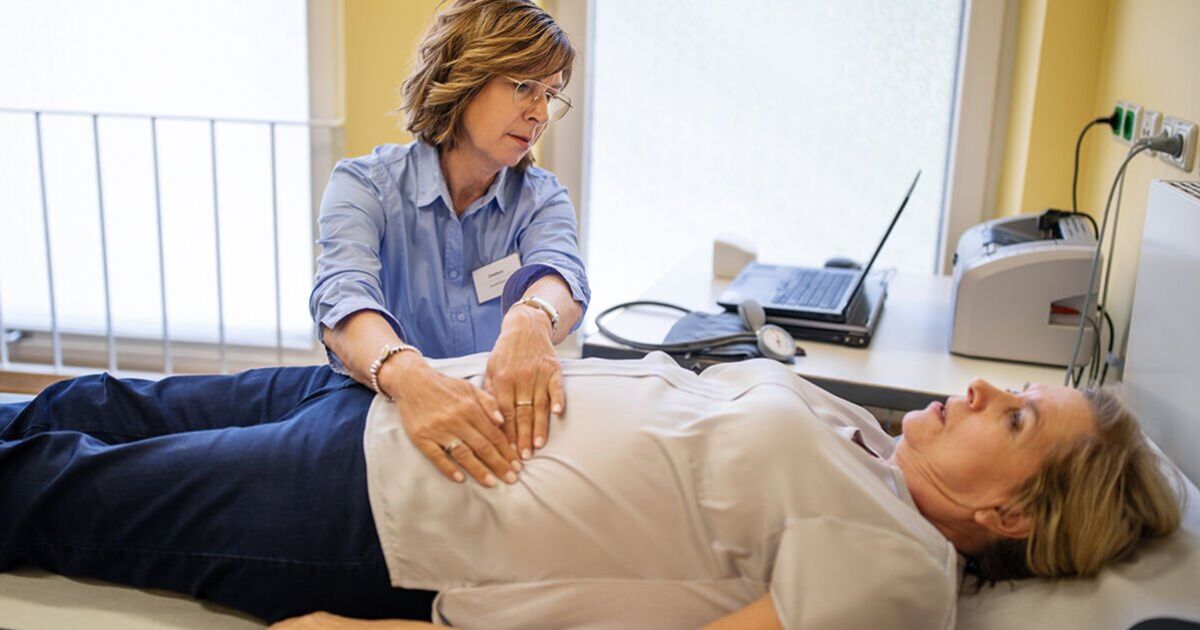The liver is a vital organ that carries out more than 500 bodily functions. These include converting food into energy and removing toxins from the blood.
Therefore any damage to the liver can have a devastating and lasting impact. Liver disease is one such example of this, which if left untreated, can result in liver failure and even death.
However, with many types of liver disease the warning signs do not appear in its early stages, meaning symptoms are often missed and earning it the reputation as a “silent killer”.
Now experts have issued a warning as the latest figures revealed a staggering increase in the number of hospital admissions due to liver disease in England.
Data from the Office for Health Improvement and Disparities showed there was a 22 percent increase in liver disease hospital admissions from 2021 to 2022.
More specifically there were 82,290 admissions in 2022 compared to 67,458 the year prior.
Compared to in 2012, hospital admissions due to liver disease increased by almost 47 percent.
Vanessa Hebditch, director of policy at the British Liver Trust, voiced her concerns about the rise in cases.
“These figures once again demonstrate how action is needed,” she said.
“The British Liver Trust is calling for a prompt and comprehensive review of adult liver services to address the huge variation and inequalities in liver disease treatment outcomes and care.
“The surge in hospital admissions emphasises the urgent need for immediate action to tackle the growing burden of liver disease on the NHS and society as a whole.”
There are many types of liver disease including fatty liver disease, alcohol-related liver disease and hepatitis.
In their early stages they don’t usually present with symptoms, these tend to show as the disease progresses.
Typically symptoms will appear when the disease has developed to cirrhosis, which is when the liver becomes scarred and lumpy after years of damage.
They include:
- Tiredness and weakness
- Loss of appetite
- Weight loss and muscle wasting
- Feeling sick (nausea) and vomiting
- Tenderness or pain around the liver area
- Tiny red lines (blood capillaries) on the skin above waist level
- Very itchy skin
- Yellowing of the skin and the whites of the eyes (jaundice)
- A tendency to bleed and bruise more easily, such as frequent nosebleeds or bleeding gums
- Hair loss
- Fever and shivering attacks
- Swelling in the legs, ankles and feet due to a build-up of fluid (oedema)
- Swelling in your abdomen (tummy).
The cause of the disease will depend on what type a person has.
According to the British Liver Trust, 90 percent of cases are linked to alcohol, obesity, hepatitis B and hepatitis C – making most cases preventable.
Ms Hebditch added: “Addressing the root causes of liver disease, such as alcohol misuse and obesity, should be at the forefront of the government’s agenda.
“By allocating resources to education, raising awareness, and promoting healthier lifestyles, we can collectively work towards reducing the burden of liver disease and improving the well-being of individuals across the country.”
To lower your risk of liver disease, the NHS recommends:
- Trying to maintain a healthy weight
- Not drinking too much alcohol.
“Vaccines are available for hepatitis A and hepatitis B,” the health body adds. “These are recommended if you’re at risk.”







